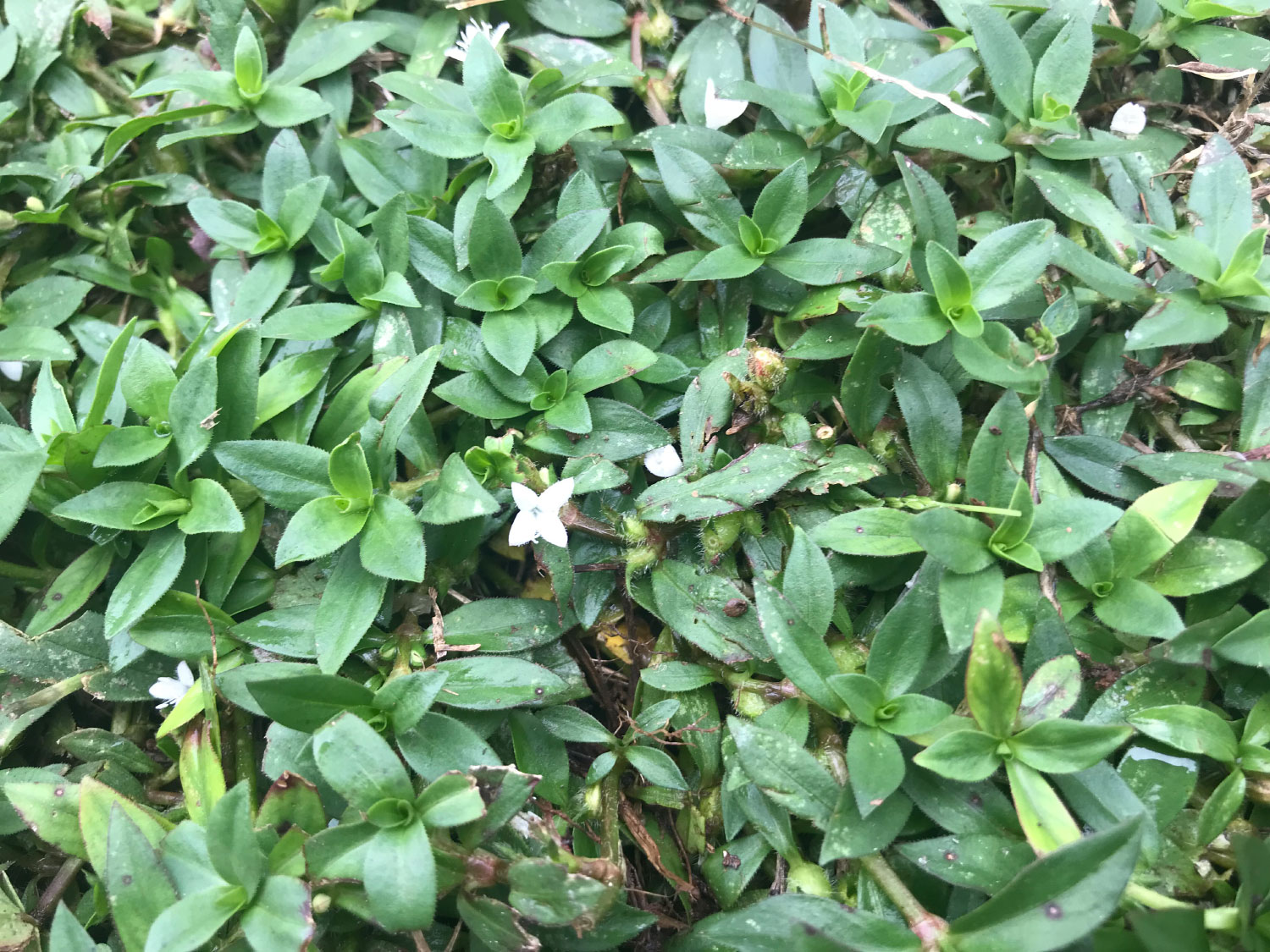Virginia Buttonweed is a broadleaf perennial weed and a common problem in many lawns that often begs the question: “What are these little white flowers?” Native to the eastern United States, its prostrate growth habit can quickly choke out the surrounding turf in optimal conditions. Once established, it produces a mat of green, waxy leaves and produces small white flowers with four petals creating an eyesore in our turf.
How To Identify Virginia Buttonweed
Identifying features of Virginia Buttonweed include the following:
- Prostrate growth habit, meaning it grows out instead of up.
- Opposing leaves. This means leaves come in pairs directly across from each other on the stem.
- Leaves lack petioles, the small attachment that leaves from trees traditionally have.
- Branched veins in the leaves: the veins in the leaves go out from the midrib like tree leaves instead of parallel like grass leaves.
- The weed has small white flowers with four pointed petals.
Virginia Buttonweed is often confused with Doveweed. To help you know what is what, here are some traits that differentiate them.
- Flowers:
- Virginia Buttonweed has white flowers
- Doveweed has purple flowers
- Leaf veins:
- Virginia Buttonweed branches from the midrib.
- Doveweed runs parallel to each other.
- Leaf orientation:
- Virginia Buttonweed has opposing pairs.
- Doveweed has alternating individuals.
The Harm of Virginia Buttonweed
Thick roots called rhizomes allow patches to spread larger and act as energy stores for recovery from dormancy or injury. These rhizomes make Virginia Buttonweed a perennial. Generally, pre-emergent control products are formulated to stop root development in germinating seeds. Since perennial plants regrow each year from existing roots, pre-emergents don’t offer control of these plants. The energy stored in rhizomes make post emergent control a challenge too. When injured, they can recover with the energy stored in those rhizomes, meaning diligent reapplication is required for termination and could take as long as a couple of years to deplete it entirely.
Ways To Control Virginia Buttonweed
Pay close attention to the amount of water applied to the landscape. A good rule of thumb is to water one inch per week across 2 to 3 non-contiguous days during active growth. (Calculations should include steady rainfall.) Virginia Buttonweed appreciates more moisture than our turfs and will utilize thinness and loss of vigor from overwatering. Healthy turf is encouraged by applying appropriate water to the lawn, while weeds that prefer wet feet are discouraged.
Cut height is equally important. Maintaining a growing-season height of 1.5 to 2” is ideal for density, root development, and color. Virginia Buttonweed can tolerate cut heights as low as .5”.
Manual removal is a tough proposition. Since it can root from fleshy tissue, hand-pulled materials cast to the side can root where they land. They readily break away from the root mass, and regenerate from the roots as well. For quick removal, digging up the roots and backfilling is fine, as is the use of non-selective weed killers. Control, however, is possible with time, when the correct products are used.
We Can Help
Virginia Buttonweed can be a little bit of a pain. When it forms a dense mat, it makes ugly patches in a yard with little white flowers. Fortunately, with the right cultural practices, and the application of the correct control products by your friends at Nature’s Turf, Virginia Buttonweed can be a memory throughout a couple of years.








